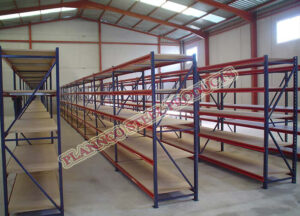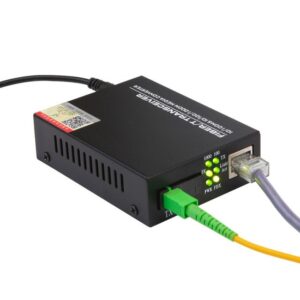Modern buildings are becoming more complex, with layers of concrete, metal, and energy-efficient materials that improve performance but often weaken radio and cellular signals. For emergency responders, this signal loss poses a serious risk — communication breakdowns during crises can slow down response times and endanger lives. Reliable, uninterrupted communication inside every structure is now a fundamental part of building safety planning.
This is where ERRCS systems play a critical role. These in-building communication systems ensure that first responders, such as firefighters and law enforcement, can stay connected across every corner of a facility. As wireless technology evolves, ERRCS and similar systems are becoming smarter, more efficient, and deeply integrated with building management networks, paving the way for the next generation of in-building safety infrastructure.
The Shift Toward Smarter Building Safety
Building safety used to focus primarily on structural strength and fire suppression. Now, connectivity has become just as essential. Communication failures during fires, medical emergencies, or natural disasters have shown how crucial in-building wireless safety systems are for coordinated response.
The New Safety Ecosystem
Modern facilities integrate multiple systems for complete safety coverage:
- Fire Alarms and Sensors: Detect hazards early but depend on clear communication for timely alerts.
- Public Address Systems: Require reliable signal coverage to guide evacuation efforts.
- In-Building Wireless Networks: Facilitate continuous communication between emergency crews and command centers.
- Digital Control Systems: Centralize monitoring and automate alerts for faster coordination.
These technologies now work together to create data-driven, connected safety environments where every system supports and reinforces the other.
How ERRCS Fits Into Wireless Safety Infrastructure
ERRCS, or Emergency Responder Radio Coverage Systems, amplify and distribute public safety radio signals within buildings. The system bridges the gap between outdoor communication networks and interior spaces that would otherwise be radio-dead zones.
Core Components
- Donor Antenna: Captures radio signals from the local public safety network outside the building.
- Bi-Directional Amplifier (BDA): Boosts the signal in both directions to ensure two-way communication.
- Distributed Antennas: Deliver consistent signal coverage across floors and enclosed spaces.
- Battery Backup: Provides uninterrupted operation during power failures, ensuring system reliability when it’s needed most.
ERRCS ensures that first responders can communicate seamlessly across multiple levels, even in locations shielded by dense materials or complex layouts.
Emerging Trends in Wireless Safety Technology
As buildings become smarter and digital transformation accelerates, wireless safety systems are evolving in several key ways.
1. Integration With Building Management Systems (BMS)
New generations of ERRCS and wireless safety networks can integrate directly with a facility’s BMS, allowing administrators to monitor performance, receive alerts, and coordinate maintenance from a single dashboard. This integration enables real-time diagnostics and predictive maintenance.
2. Cloud-Based Monitoring
Cloud-based solutions allow maintenance teams to oversee multiple buildings remotely. These platforms track signal strength, battery health, and device functionality. If a component fails or signal levels drop, the system sends instant alerts, reducing downtime and ensuring continuous compliance.
3. Digital Signal Processing (DSP)
Modern ERRCS systems use DSP to filter noise and interference, producing cleaner, more stable radio communication. This technology ensures high-quality transmission even in high-density environments or near electronic interference sources.
4. Energy Efficiency and Compact Design
Manufacturers are developing smaller, energy-efficient amplifiers that consume less power without compromising performance. Compact designs also simplify installation, particularly in space-constrained areas like high-rise utility rooms.
5. Multi-Frequency Support
As public safety departments adopt different radio frequencies, next-generation ERRCS units are being designed to support multiple bands simultaneously. This flexibility ensures compatibility across jurisdictions and simplifies system upgrades.
Regulatory Evolution: Codes Driving the Future
Building and fire codes continue to evolve to address the growing importance of wireless communication systems.
NFPA 72 and IFC 510 Updates
Both the National Fire Protection Association (NFPA) and the International Fire Code (IFC) regularly revise their requirements to reflect new technology and field experiences. These updates define performance standards for ERRCS and in-building communication systems.
Key areas include:
- Minimum Signal Strength Requirements: Defining exact decibel levels for adequate coverage.
- Coverage Percentages: Typically 95% in critical areas and 90% building-wide.
- Backup Power Durations: Increasing requirements for longer operational continuity during power outages.
- Inspection Frequency: Mandating annual or semi-annual system testing and certification.
Local Jurisdiction Adaptation
Municipalities often enhance these standards based on their local emergency frequencies and infrastructure needs. For developers, early consultation with the Authority Having Jurisdiction (AHJ) is critical to ensure design compliance before construction completion.
The Role of Data and Automation
Data analytics are transforming the way building safety systems operate. By collecting and analyzing performance metrics from ERRCS and related infrastructure, operators can detect potential failures before they cause service interruptions.
How Automation Improves Reliability
- Predictive Maintenance: Software algorithms forecast equipment wear and recommend servicing before breakdowns occur.
- Automated Testing: Remote signal sweeps confirm coverage performance without manual intervention.
- Event Logging: Systems document every status change, test, or alert, supporting regulatory compliance and audit trails.
Automation reduces manual oversight while increasing accuracy and reliability.
Challenges Facing Building Owners and Facility Managers
While technology is advancing, several challenges still make ERRCS implementation complex.
1. Cost of Installation
The expense of installing ERRCS varies with building size, structure, and local regulations. Large or multi-level buildings with concrete cores require more equipment, driving up costs.
2. Maintenance and Testing
Many owners underestimate ongoing maintenance needs. Without regular testing, even small equipment faults can cause major coverage gaps during emergencies.
3. Space Constraints
Locating suitable space for amplifiers, cabling, and power systems can be difficult in older or fully leased buildings.
4. Coordination With Authorities
Delays often occur when building owners fail to involve local fire or public safety departments early in the planning process. Early collaboration ensures that system design aligns with required frequencies and coverage goals.
Addressing these challenges early streamlines compliance and long-term performance.
Integrating ERRCS With Modern Safety Networks
Future-ready buildings will feature a unified safety network combining fire systems, access control, and communication systems.
Benefits of Integration
- Real-Time Response: Incident alerts can automatically trigger communication channels and safety protocols.
- Unified Monitoring: Facility teams can oversee all safety systems through one interface.
- Faster Coordination: Cross-system alerts ensure that all relevant teams are informed instantly.
- Reduced Complexity: Integrating infrastructure minimizes the need for multiple independent systems.
This interconnected framework improves efficiency, lowers maintenance costs, and ensures consistent safety performance across facilities.
The Future of Connectivity Standards
As the demand for smarter, safer buildings grows, regulatory bodies are expected to tighten signal coverage standards further. Future revisions will likely include mandatory digital system compatibility, remote monitoring, and enhanced cybersecurity protocols to protect wireless communication infrastructure.
Trends to Watch
- AI-Driven Diagnostics: Artificial intelligence will detect and respond to anomalies faster than human operators.
- IoT Integration: Smart sensors and connected devices will automatically communicate system status and alert responders.
- Standardization Across Jurisdictions: Unified national codes could streamline compliance for developers with multi-state portfolios.
- Sustainable Designs: Energy-efficient systems will align with green building certifications like LEED and BREEAM.
These trends will reshape how buildings are designed, monitored, and maintained — with wireless safety systems at the center of it all.
How Facility Managers Can Prepare for the Future
To stay ahead of evolving requirements, facility managers must be proactive about integrating modern wireless safety technologies.
Actionable Steps
- Conduct Regular Assessments: Test coverage across all floors to identify weak zones.
- Upgrade Legacy Systems: Replace outdated analog systems with digital or hybrid ERRCS solutions.
- Collaborate With Specialists: Work with certified ERRCS installers and frequency engineers to ensure compliance.
- Budget for Lifecycle Costs: Include testing, maintenance, and software upgrades in annual budgets.
- Stay Informed: Monitor code changes and technological advancements to anticipate future needs.
By implementing these strategies, managers can ensure continuous compliance and occupant safety.
The Bigger Picture: Building for Lifesaving Communication
The integration of wireless safety systems like ERRCS represents a shift toward more connected, intelligent buildings. These technologies enhance not only compliance but also resilience. When every second matters, seamless communication between responders and control centers becomes the difference between containment and catastrophe.
Investing in reliable signal coverage today creates safer environments and prepares buildings for the future demands of smart infrastructure. For architects, engineers, and facility owners, ERRCS technology is not just a regulatory requirement — it’s a cornerstone of modern safety design.
Conclusion
The next generation of building safety depends on intelligent connectivity, automation, and continuous communication. Systems like ERRCS are redefining how modern buildings protect occupants and support first responders. As technology advances, these systems will integrate more deeply with digital building networks, offering smarter diagnostics, better energy efficiency, and faster response capabilities.
To remain compliant and future-ready, property owners must adopt proactive maintenance, digital monitoring, and early collaboration with code authorities. With innovations in data, design, and remote management, the future of in-building safety will depend on robust, interconnected solutions such as the Emergency Responder Radio Communication System, ensuring safer operations for both responders and occupants alike.





